Jewels of Thane Creek
Last year in 2015, I spent some significant amount of time shooting a documentary for Mangrove Cell, Maharashtra Forest Department to showcase the biodiversity of Thane Creek. Through this article, I want to share the thought process behind it.
The Canon Cinema C300 camera was the primary camera for this documentary. I used all kinds of Canon lenses like 24-70 f2.8 L USM, 24-105 f4 L IS USM, EF 70-200 f2.8 L IS II USM, EF 100mm f2.8 L IS USM, 400mm f2.8 L IS USM, EF 2xII TC, EF 2xIII TC, EF 1.4x TC etc. I will release the behind the scenes video later.
The shooting for “Jewels of Thane Creek” started in September 2015 and I have shot atleast 8-10 days every month till Jan 2016. This helped me capture different kinds of species. Nevertheless no film can actually capture all the species. The idea was to showcase the beauty of the area so I tried hard to shoot the species in ideal light.
I strived to capture the complex inter-relationship between the various species in Thane Creek. I have selectively focused on some of the tiny species like crabs which a normal visitor is more likely to find than other species. Showing their relationship with the mangroves means the common visitor won’t go back home feeling empty handed. He/she can easily appreciate how each tiny species has a role to play in the ecosystem.
Through this film, I have also tried to briefly throw light on the immense pollution caused by the immersion of thousands of idols. There was a time when the idols were made of clay and natural colours made out of vegetable and other organic material were used. Unfortunately today the use of synthetic chemicals for colours and plaster of paris(PoP) for the idol is rampant. I was saddened to see idols lying in the creek, visible during the low tides, for two weeks.
After that I had to leave the place for a month. When we came back, perhaps the idols were somehow covered up in mud or washed away to some other place. After the Ganesh Puja immersion for two days the water had a thick black coating and I didn’t sight the mudskippers during those two days. I hope we can learn from our mistakes and stop using synthetic dyes and chemicals for idol making. I hope the Government can consider creating enabling policy for promoting organic dyes and biodegradable material for idol making as well as disincentives/ban on idol making using synthetic chemicals.
It was sweltering hot in Mumbai. I read that in September 2015, Mumbai was the hottest in 40 years. We were sweating bucket loads and instead of using handkerchief we had towels to wipe away the sweat. In that heat carrying the heavy equipment is something which no faint-hearted person should venture into.
During the middle of the shoot, I decided on the name of the film. Based on the name “Jewels of Thane Creek” I kept on searching for an ideal sunset with flamingos. I wanted the golden light of the setting Sun to dazzle the mud like gold. At the end of the shoot all the intended shots were canned and we were having coffee from a flask and the Sun was about the set. The flamingos suddenly appeared on the scene. For a moment I couldn’t believe what I was seeing and was gazing at the lovely sight. Mrudul’s urging brought me to my senses and we started scrambled to set up the closing shots. Morale of the Story – keep on waiting for what you want. Some day your time will come.
The shots of the spiders, dragonflies, insects etc were pretty difficult as shooting macro means moving very close to the subject. When you are close to the subject, it is very difficult to get the critical focus. Filming macros is way more difficult than macro photography. In still photography you can crop the shots. In filming I have to compose it in camera and can’t crop it like most of you guys. Every thing is as I shot except for basic colour contrast work. And some of these spiders and bugs are really tiny and even smaller than a thumbnail. Shooting was painfully slow. Spotting is not easy as these fellows often have an excellent camouflage. Then I have to find a way to move in pretty close and position the camera perfectly. Slight wind and the shot is lost.
Mangroves are under threat throughout India as well as in other parts of the world. The mangroves have the ability to fix 3-5 times more carbon than other tree species. It also acts as a physical barrier during storm surges. So the aerial shot was meant to show the mangroves as a dense physical barrier.
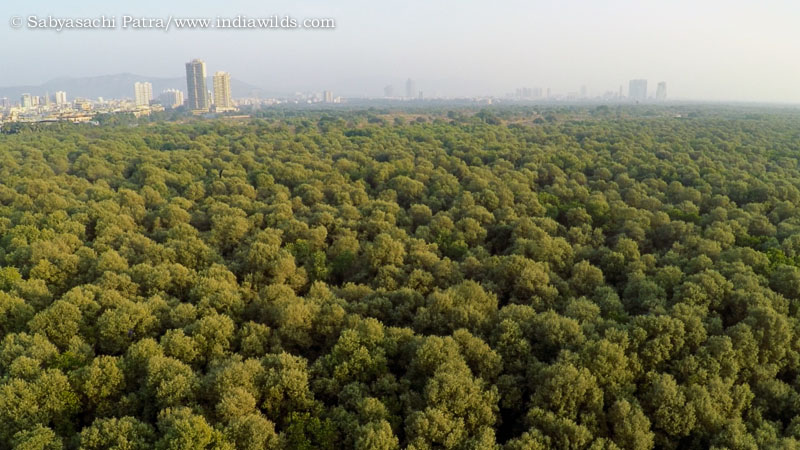
We spent many days for the aerial filming. Getting it right the way I had visualised it was not easy. Nevertheless, I am happy that the things worked out fine. I don’t fly the remote copters as I believe it is important that trained people handle it. Mrudul has got her training for commercial pilot license (CPL) and is incredibly smooth in moving the copter. As a director my role is to direct her to move the copter in the direction I want.
I see many people spending their weekends visiting malls. I hope after watching this film, some of you who are close to Mumbai may take your kids, family and friends to Airoli to the Forest Department Interpretation Centre which is likely to be thrown open to public in a month’s time. The film will be shown there. Being so close to a metropolis, one can easily visit and enjoy watching the bio-diversity of thane creek not only in the film but discovering yourself live. That will fulfill the objectives of the Indo-German Biodiversity Project on Coastal and Marine Protected Area.
This film is a labour of love. I have tried my best to keep it very short so that you all can patiently watch the full 13.33 mins of this film. Else, you won’t understand the linkage of various species with each other. I hope you all will like it. You may consider sharing it with your friends and definitely with young kids to raise awareness. Our generation is increasingly failing to save Wild India. I hope younger generation can learn to save our jewels – the wilderness areas and wildlife.
- GoPro Hero 12 Black - 6 September,2023
- Leopards: The Last Stand - 2 July,2023
- Drifting in the Waters of Sundarbans - 26 March,2023

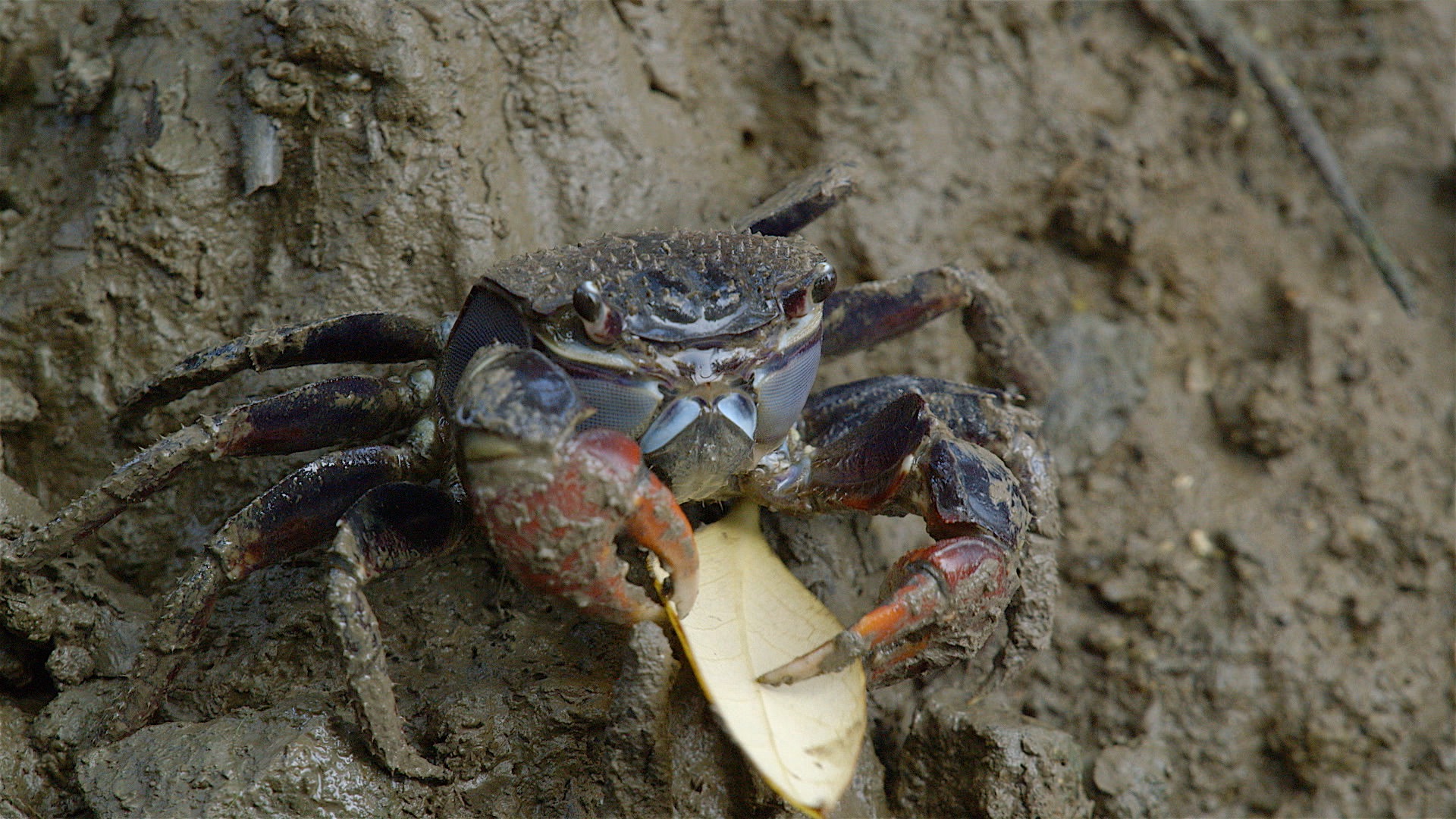
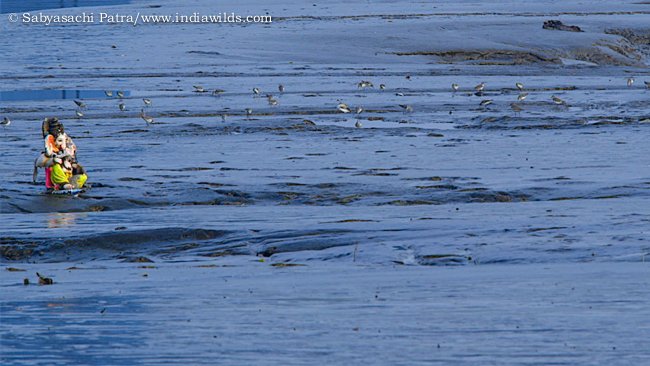
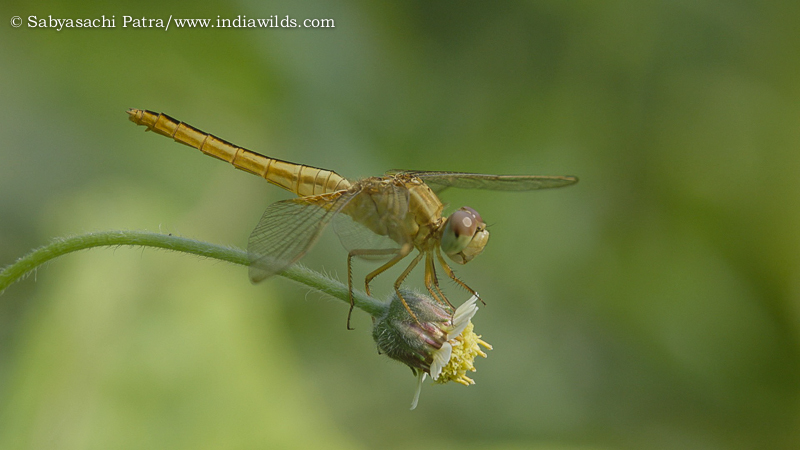

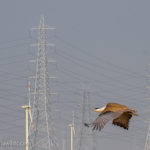











I saw the link posted on Facebook today. Not only it is an audio-visual delight, it somehow struck the other senses too. The time-lapse video of the sun rising had me in a trance. At times, I felt transported. The sights of flamingos rummaging for lunch and in flight are a treat. The macro footage of the crabs are amazing, the one pulling in a leaf underground, the crabs creeping up the mangroves. I appreciate what you wrote about shooting macros. I also feel the same way about the immersion of idols and what a mess, and worse, what a disgrace!”
PS: In para no. 2, line 1 you have mistype the year where you say the shooting started in Sep 2016.
Wow! I loved the captures especially the shots of the mangroves and the insect. Yes, mangroves are rapidly disappearing, all eaten up by urban construction.
Thanks Rachna,
I am happy that you liked it. I found a lot of encroachment and construction all around the mangroves. The people of Mumbai are taking notice and in many places have started protesting against the encroachments. So there is some hope. If we can spread the message and more people become aware about it then perhaps something good can happen.
Cheers,
Sabyasachi
It is such a visual delight sir! Watched it in a rush. Will come back and watch again!
Thanks Mridula!
Also don’t forget to show it to your kid. I want them to learn the relationship between various species.
Cheers,
Sabyasachi
Watched the documentary “Jewels of Thane Creek”. Fantastic, especially the the variety of mangrove plants and their flowers, the various crabs and the flamingoes.
I am very happy that you like the documentary “Jewels of Thane Creek”. These are our treasures and we need people to know about them. I hope it can reach to many people.